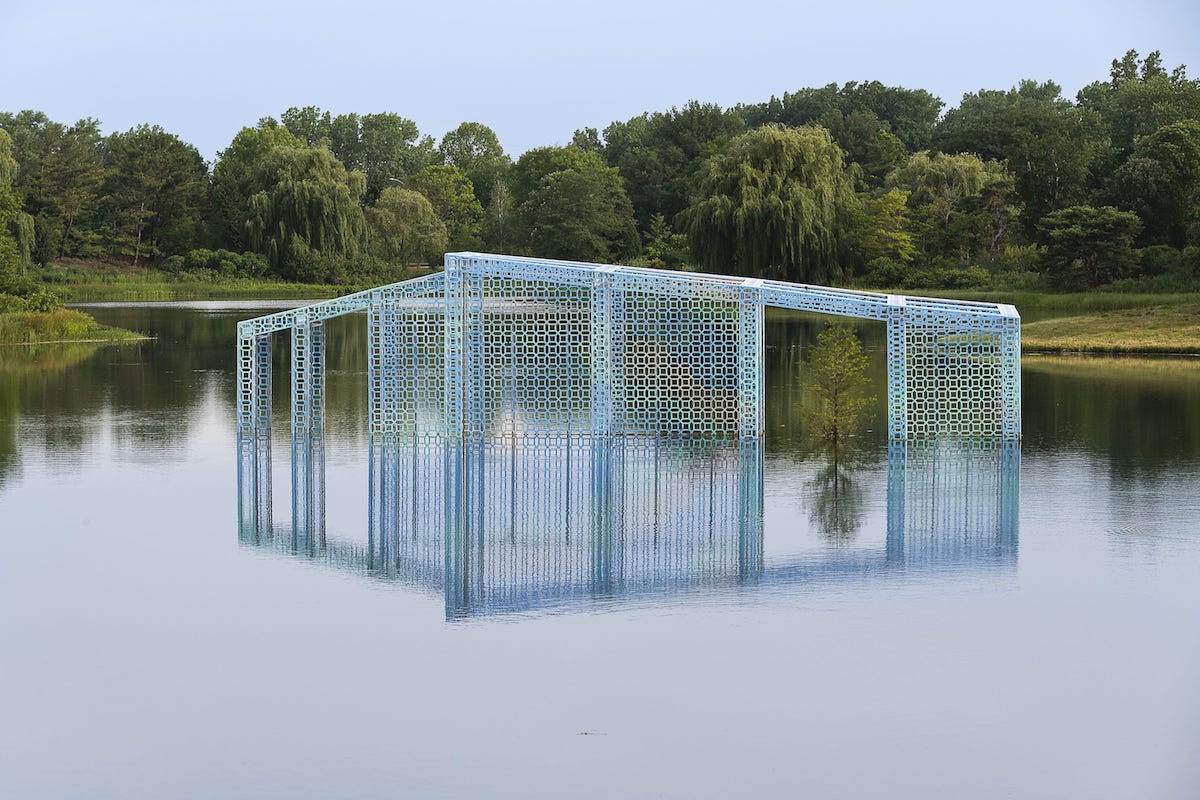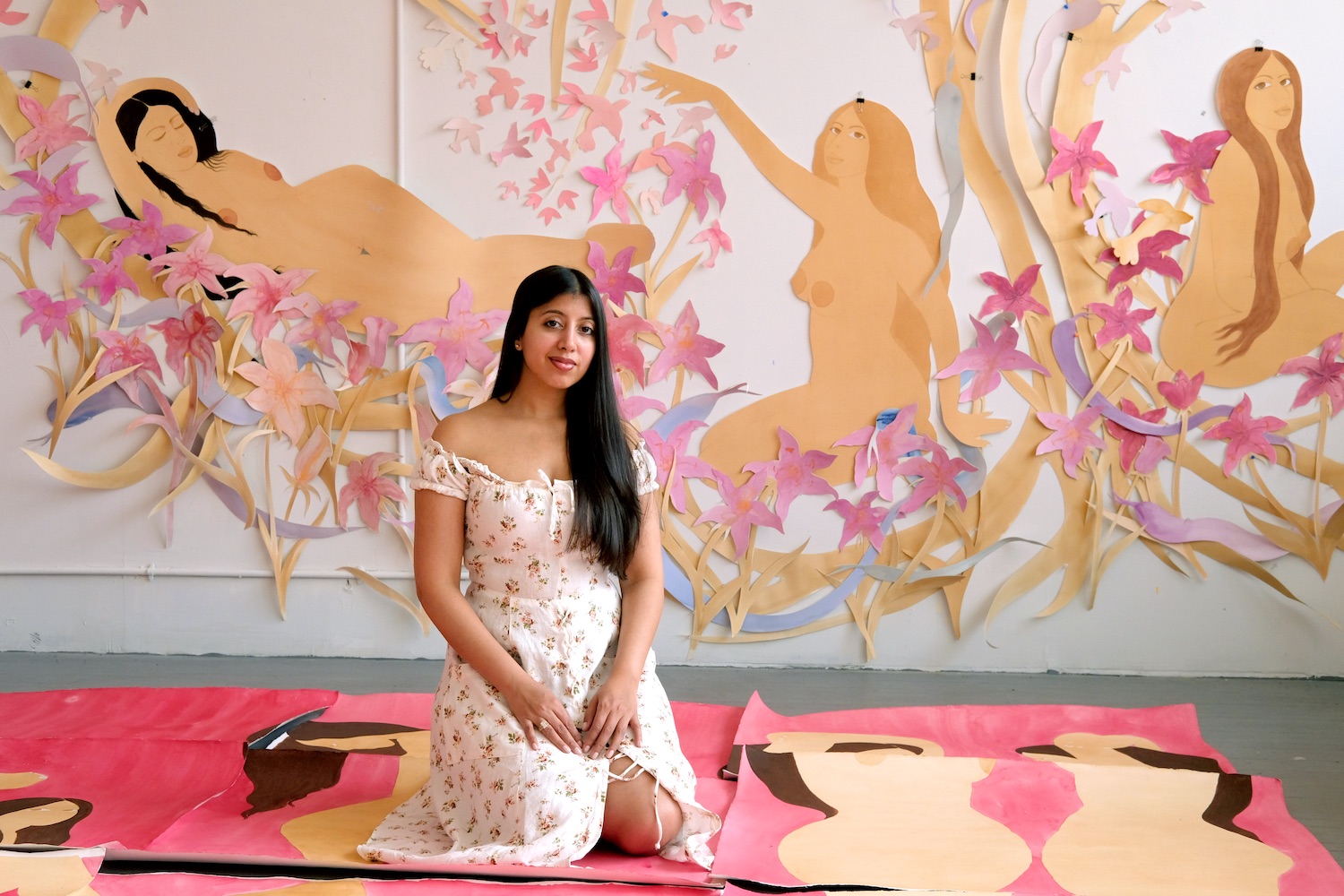Artist Edra Soto returns to the Hyde Park Art Center with biggest exhibition yet.
Ten years ago, the artist, educator, and community organizer Edra Soto created the first iteration of her “GRAFT” series at the Hyde Park Art Center in Chicago. Inspired by the decorative quiebrasoles and rejas (“sun-breakers” and “bars”) seen over windows or used as gates in her birthplace of Puerto Rico, the ongoing project centers around installations of geometric structures. For a full-circle career moment, Soto has returned to the Center for a year-long artist-in-residency program, which culminates this spring with her largest exhibition to date, “Destination/El Destino: a decade of GRAFT” (April 23–August 6). Curated by Allison Peters Quinn and shown in its main indoor-outdoor gallery, works will explore themes of cultural hybridity, including a new large-scale commission of the artist’s architectural “GRAFT” series, sculptures, documentary photographs, drawings, and games.
On the occasion of the show’s opening, as well as an iteration of “GRAFT” included in the Whitney Museum’s “no existe un mundo poshuracán” show, Whitewall spoke with Soto about exposing the African origins of Puerto Rican architecture to encourage dialogue and communal healing.
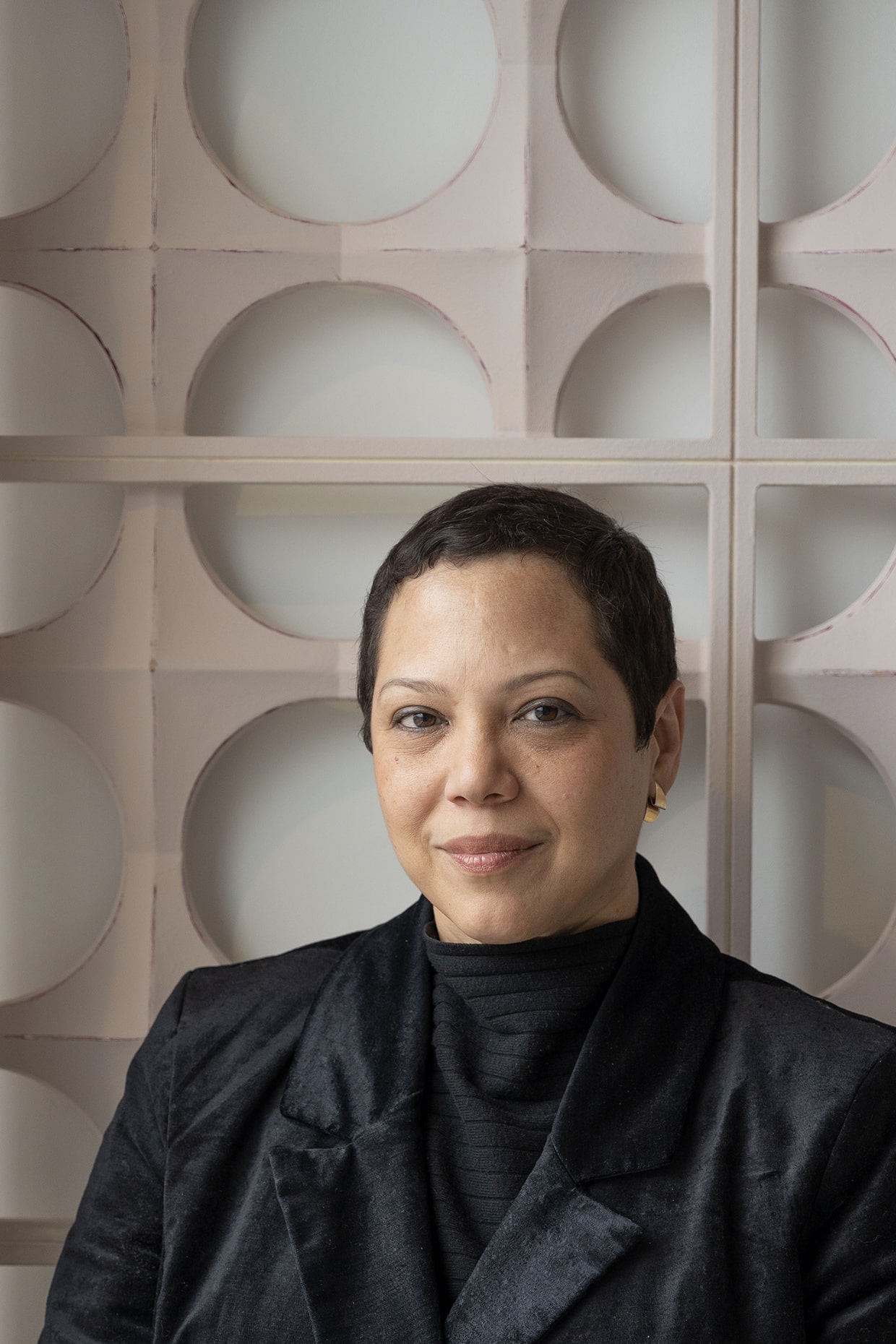
Edra Soto, portrait by Eugene Tang.
WHITEWALL: How would you describe your year-long residency at the Center?
EDRA SOTO: It was necessary for me to have a blank space to work, and the studio provided at Hyde Park Art Center gave me that opportunity. I have another studio space that is constantly in a state of flux. It can get chaotic at times and impossible to keep things clean.
My studio practice has never been a traditional one. As I go from project to project, it becomes a challenge to maintain order. It was wonderful to have an empty space that helped me imagine and explore different ideas. Ultimately, it was a quiet, private, and practical space that allowed me to mentally breathe and make work in an intimate setting.
WW: You have been repurposing your own work for the past decade. How is this seen in your latest iteration of “GRAFT”?
ES: Making large-scale work, sometimes temporary commissions that will be returned, has made me more pragmatic. I hate waste or being wasteful. My art is not a waste to me, but when art is not at its place, where it is understood as art, it becomes storage. There are works that I retain and get to show again, and others get sold. I do, however, keep a catalog of residues from past work that I eventually use to generate new work, but I always keep a fragment of previous work. That is the most honest way for me to present a ten-year survey. I build a career out of commissions and grants. The commercial artwork has impacted my career and my finances at a lower scale, comparatively.
For this exhibition at Hyde Park Art Center, I will repurpose the frame of a large-scale piece to create a new work. I will integrate hundreds of aluminum pieces that I have handcrafted, reminiscent of the decorative motifs that inform the project “GRAFT.” This large centerpiece will be complemented by other interactive works and fragments from previous “GRAFT” iterations.
“‘GRAFT’ investigates Puerto Rican cultural memory, which often masks the Black heritage of the island as folklore,” — Edra Soto
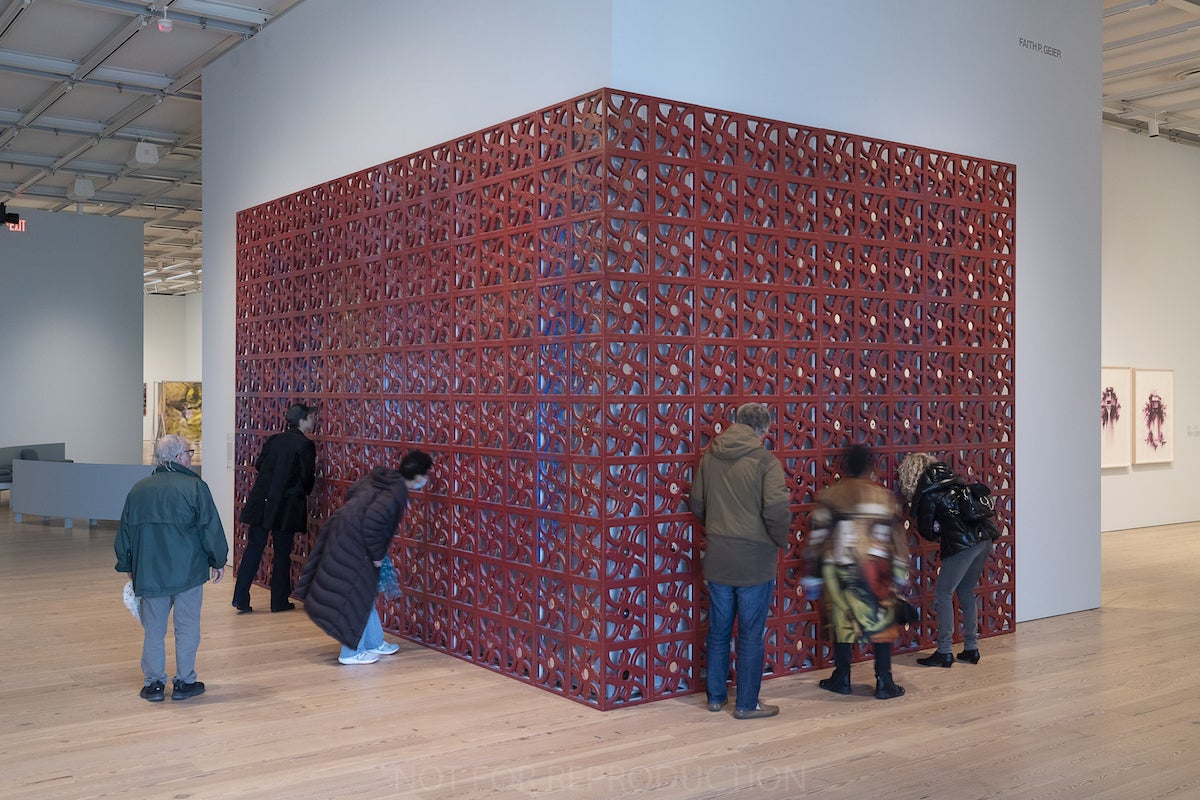
Edra Soto, “GRAFT,” 2022, 12 x 65 x 7 feet, installation view at the Whitney Museum of American Art in “no existe un mundo poshuracán: Puerto Rican Art in the Wake of Hurricane Maria” (2022), photo by James Prinz, courtesy of the artist.
WW: “GRAFT” explores the architecture of Puerto Rico and its ties to the African diaspora and Afro-Caribbean traditions. Why has this been an important topic for you to explore?
ES: For the past decade, I dedicated the greater part of my artistic career to developing this ongoing project. “GRAFT” investigates Puerto Rican cultural memory, which often masks the Black heritage of the island as folklore. However, as defended by architect Edwin Quiles, the existence of Blackness is undeniable, as the architecture, civil engineering, and urban design in many of Puerto Rico’s residential sectors mimic those of West Africa’s Yoruba communities. I translate these staples of presumed Puerto Rican designs to expose the true origins of these architectural elements. This upends our comprehension of cultural knowledge both within Puerto Rico and subsequently the colonial lineage in the United States, knowledge still excluded from education in the Caribbean and beyond.
WW: Cultural hybridity is quite palpable in Puerto Rican culture. How is this visually explored in the exhibition?
ES: The Spanish and American influences remain visible, and, as an artist, these visuals have provided ongoing reflections that I translate in an immersive experience. Sometimes, when you get the opportunity to visualize the issues that are setting you back, you at least have the opportunity to acknowledge it and decide how you want to deal with them.
In my artistic practice, I see the value in archiving images or collecting objects and sharing my sources. The insistence, or persistence in my case, of readdressing “GRAFT” through a site-responsive approach, could be perceived as transformative and even generous. There’s a lot of consideration to the space, place, and community GRAFT compartmentalizes through literary, visual, and sensorial elements.
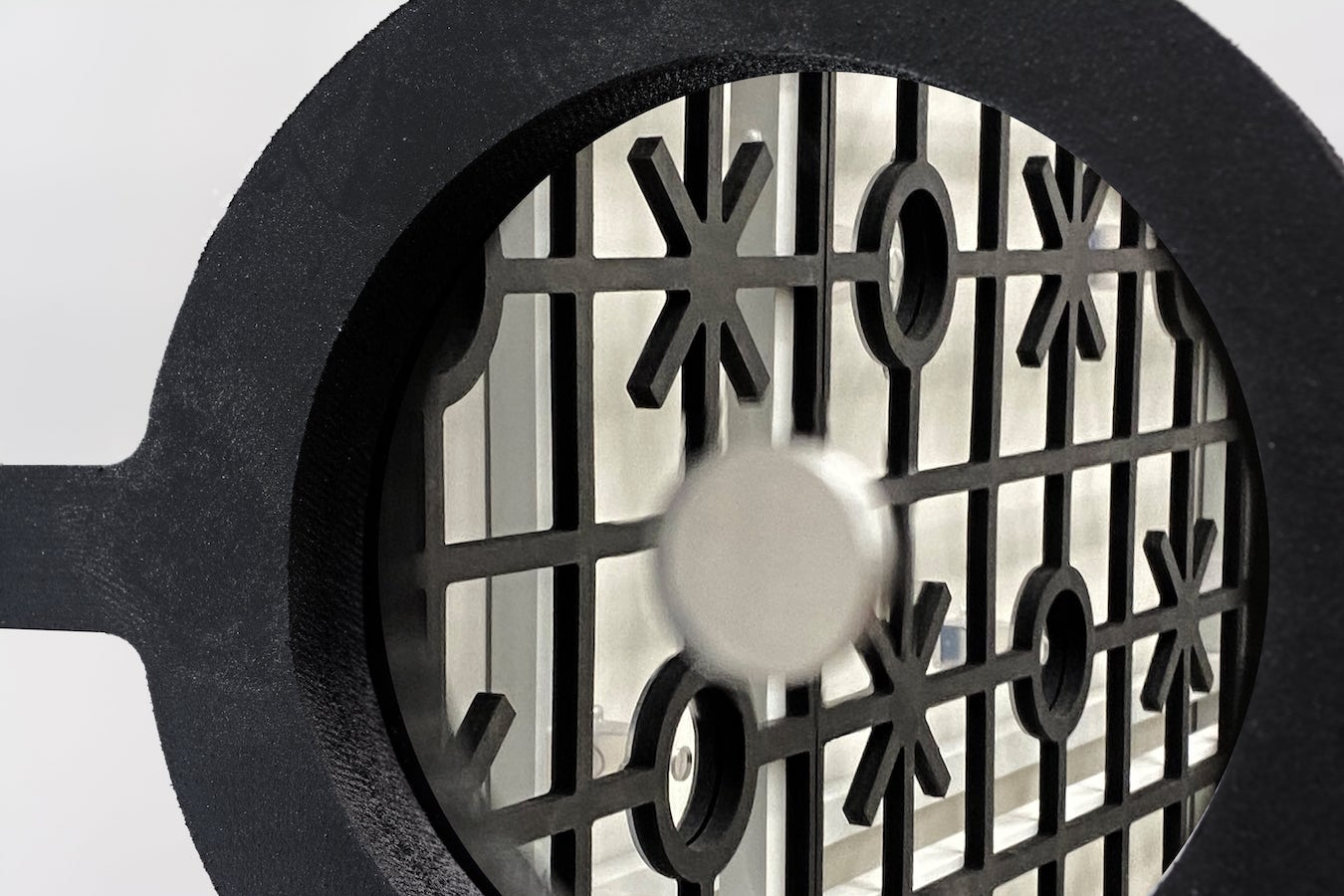
Edra Soto, “Graft” (detail), 2022, 12’ x 65’ x 4’. Whitney Museum of American Art, “no existe un mundo poshuracán: Puerto Rican Art in the Wake of Hurricane Maria,” photo by Lou Lauren, courtesy of the artist.
WW: What conversations or reflections do you hope your exhibition sparks?
ES: What belongs to us, living in diaspora, the mental and physical struggles of migrating, the traumas as a consequence of a colonial condition, the points of connection that makes us feel that we are not alone in this. I also hope that people feel engaged and compelled by an environment that instigates reflection and creates space for imagination.
WW: You’re an artist, curator, educator, community organizer, and co-director of the outdoor project space The Franklin. How do these roles tie together?
ES: I realized early on that the kind of career I wanted to build was not going to be fully sustainable, so I decided to do things that gave me agency. This includes creating The Franklin, organizing and curating exhibitions, being a part of collectives, and collecting art from my community. I worked as a high school teacher for ten years, not only because at the time it was a great place to be, but it also gave me a steady salary that allowed me to invest a bit in my wild ideas. It was not a calculated decision at all, but something that I can explain now, at a more mature age and career level. My love and passion for the art of others led me to learn about the artist-run culture and be involved and adopt this as a part of my life philosophy. Now that I have a career that sustains me and still allows me to support and give visibility to others, I feel like I am enjoying the rewards of building a career that doesn’t compromise my artistic vision.
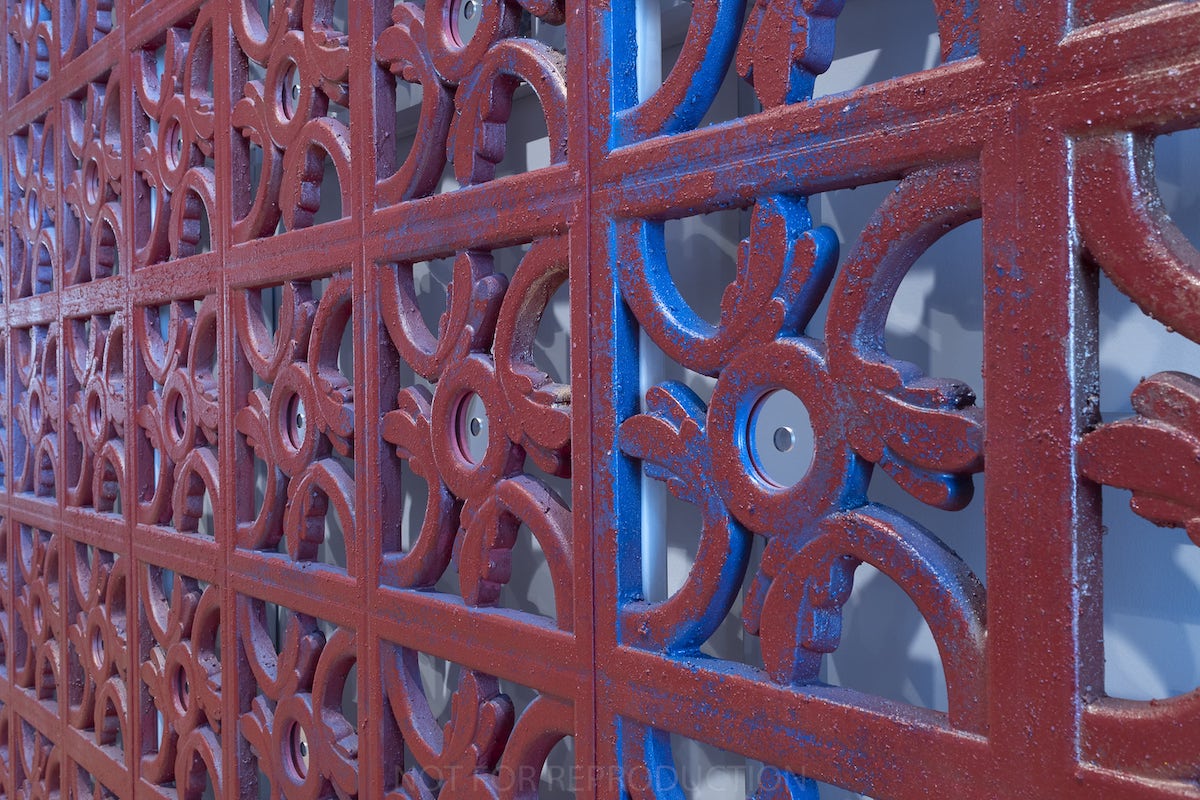
Edra Soto, “GRAFT” (detail), 2022, 12 x 65 x 7 feet, installation view at the Whitney Museum of American Art in “no existe un mundo poshuracán: Puerto Rican Art in the Wake of Hurricane Maria” (2022), photo by James Prinz, courtesy of the artist.



